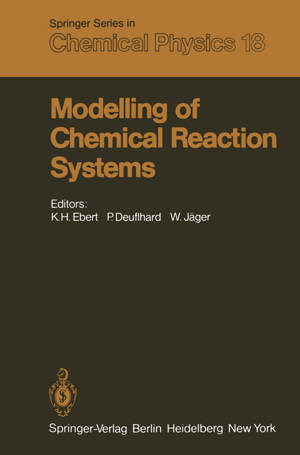
- Afhalen na 1 uur in een winkel met voorraad
- Gratis thuislevering in België vanaf € 30
- Ruim aanbod met 7 miljoen producten
- Afhalen na 1 uur in een winkel met voorraad
- Gratis thuislevering in België vanaf € 30
- Ruim aanbod met 7 miljoen producten
Zoeken
Modelling of Chemical Reaction Systems
Proceedings of an International Workshop, Heidelberg, Fed. Rep. of Germany, September 1-5, 1980
€ 162,45
+ 324 punten
Omschrijving
For rather a long time numerical results in chemical kinetics could only be obtained for very simple chemical reactions, most of which were of minor practi ca 1 importance. The avail abil ity of fast computers has provi ded new opportunities for developments in chemical kinetics. Chemical systems of practical interest are usually very complicated. They consi st of a great number of different el ementary chemi cal reacti ons, mostly with rate constants differi ng by many orders of magni tude, frequently with surface reacti on steps and often wi th transport processes. The deri vati on of a 'true' chemical mechani sm can be extremely cumbersome. Mostly this work is done by setting up 'reaction models' which are im- proved step by step in comparison with precise experimental data. At this early stage mathematics is involved, which may al ready be rather complicated. Mathematical methods such as pertubation theory, graph theory, sensitivity analysis or numerical integration are necessary for the derivation and application of optimal chemical reaction models. Most theoretical work aimed at improving the mathematical methods was done on chemical reactions which mostly were of little practical im- portance. Chemi cal engi neers, who evi dently k now well how important the chemical model s and their dynamics are for reactor desi gn, have al so to be convinced not only on the theoretical work but also on its practical applic- abil ity.
Specificaties
Betrokkenen
- Uitgeverij:
Inhoud
- Aantal bladzijden:
- 390
- Taal:
- Engels
- Reeks:
- Reeksnummer:
- nr. 18
Eigenschappen
- Productcode (EAN):
- 9783642682223
- Verschijningsdatum:
- 10/12/2011
- Uitvoering:
- Paperback
- Formaat:
- Trade paperback (VS)
- Afmetingen:
- 156 mm x 234 mm
- Gewicht:
- 566 g

Alleen bij Standaard Boekhandel
+ 324 punten op je klantenkaart van Standaard Boekhandel
Beoordelingen
We publiceren alleen reviews die voldoen aan de voorwaarden voor reviews. Bekijk onze voorwaarden voor reviews.







